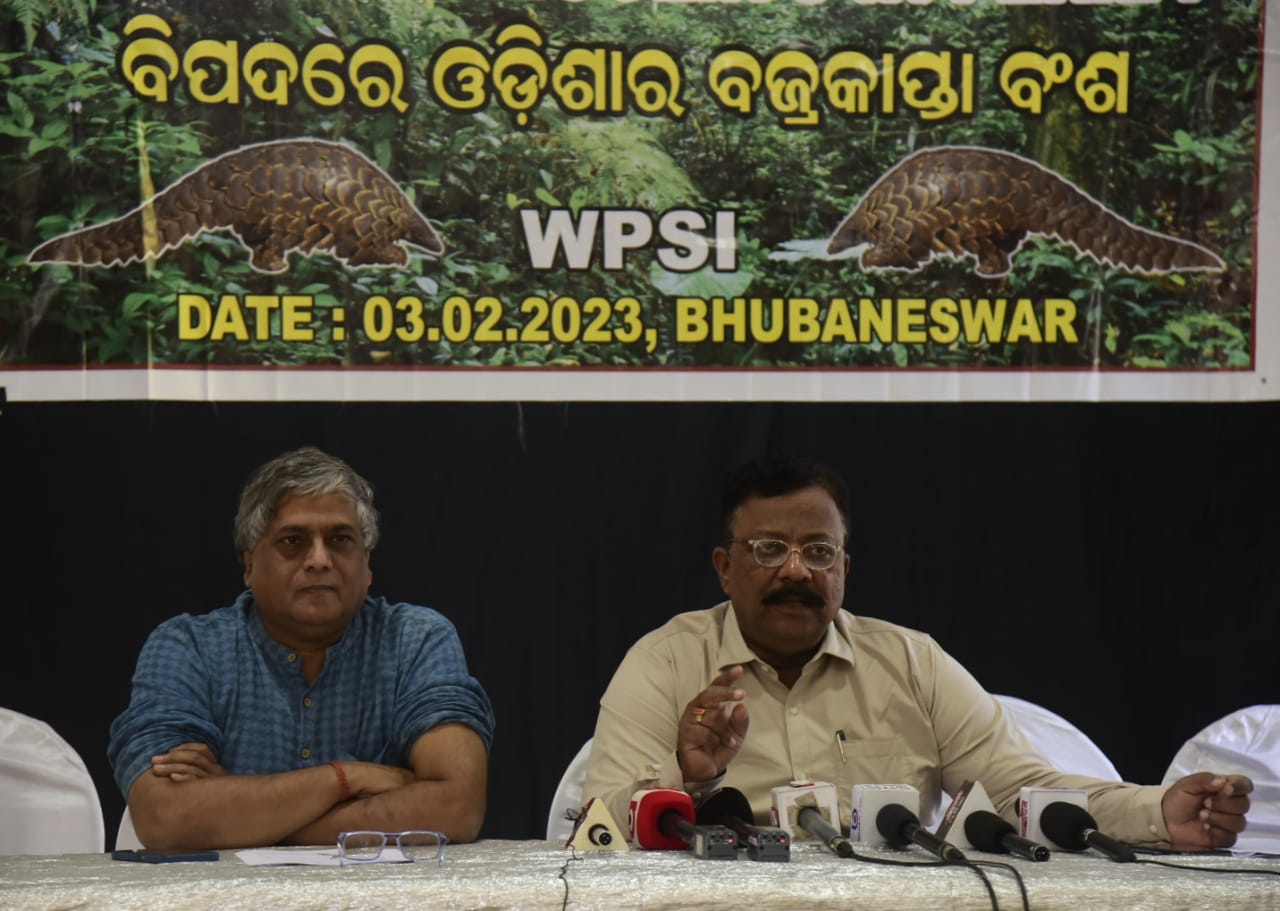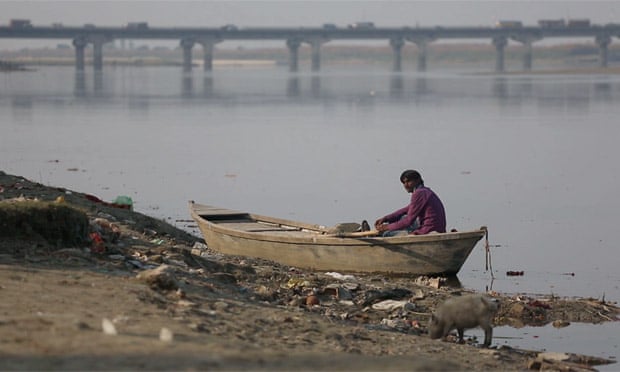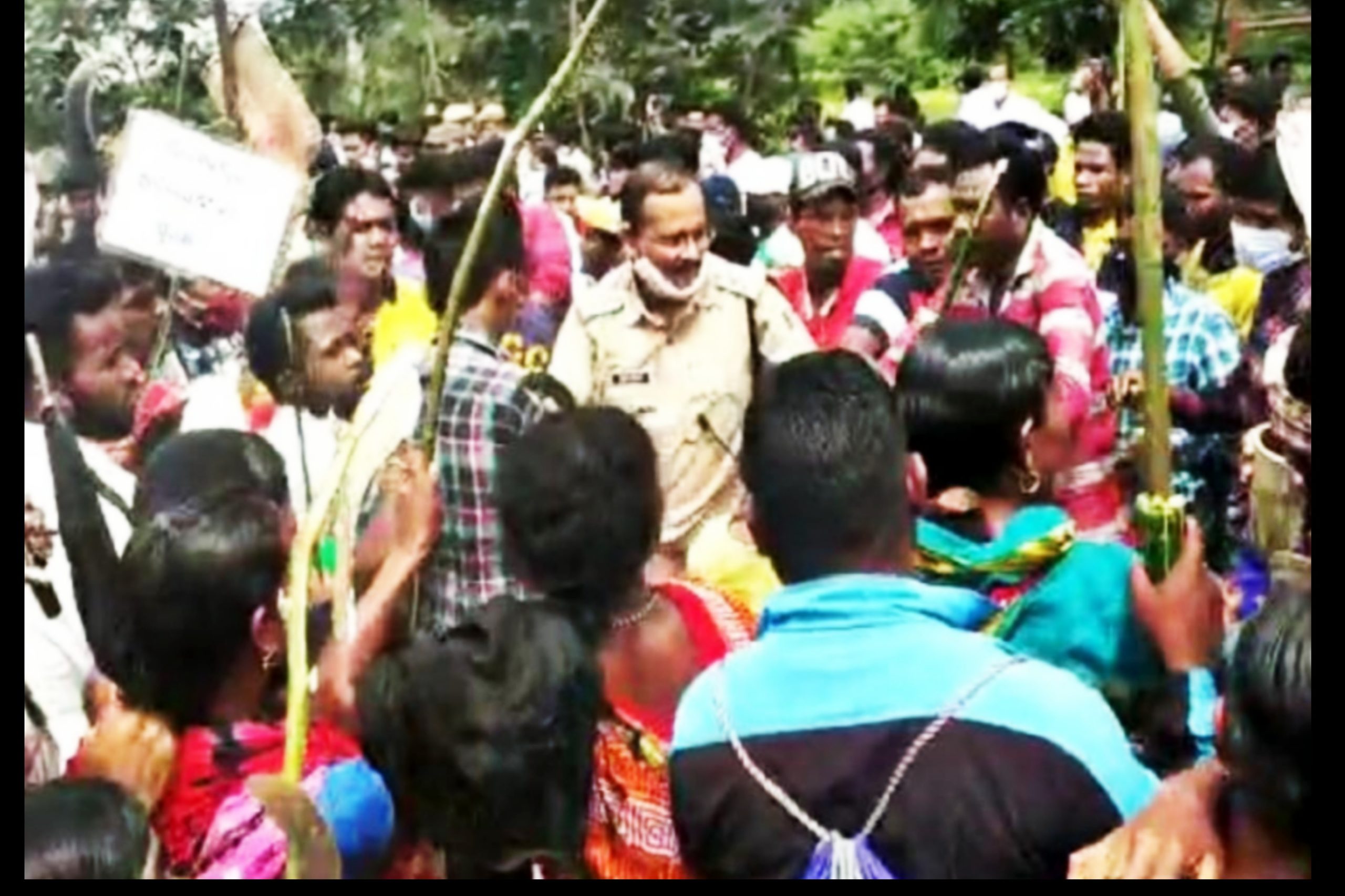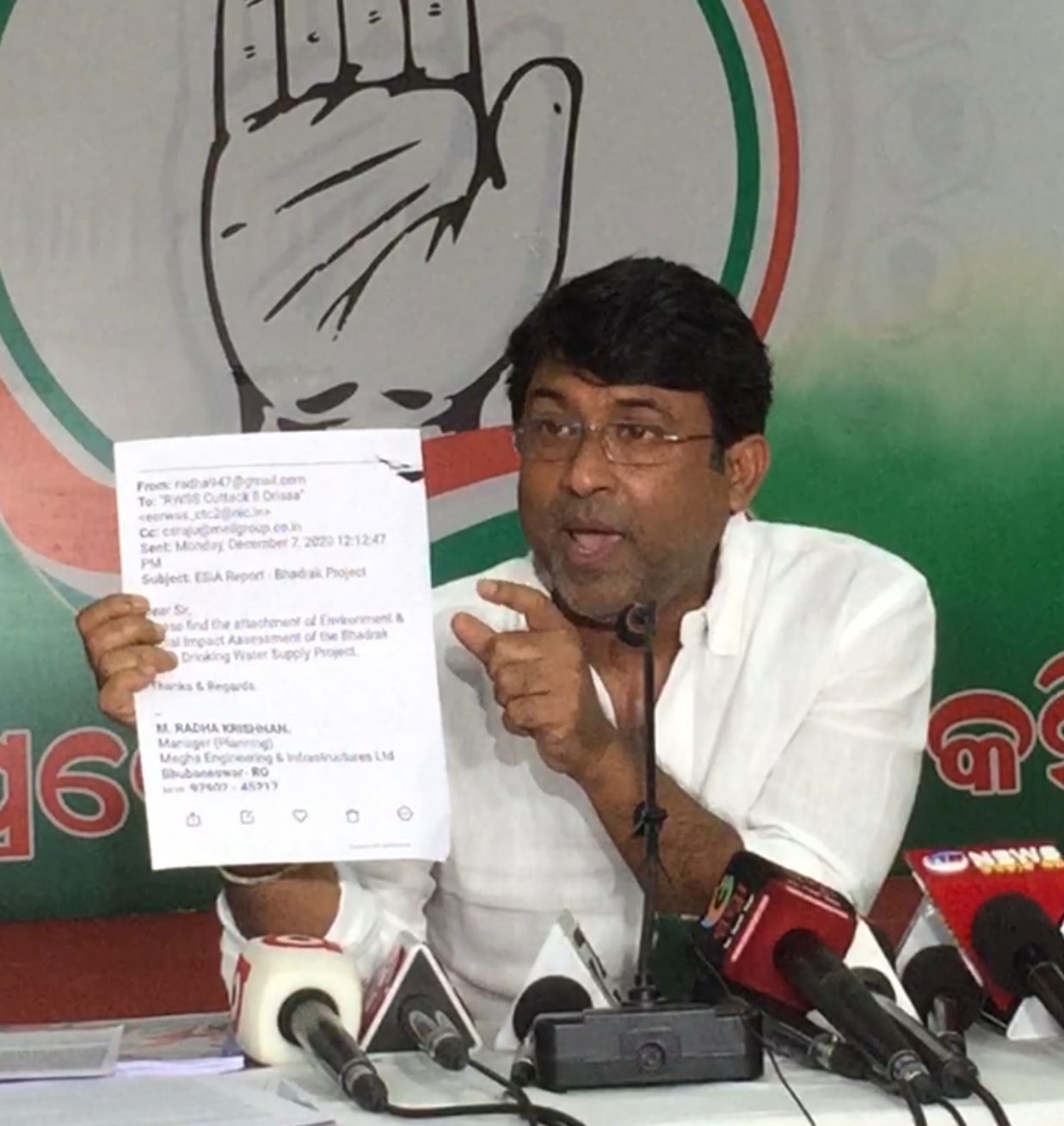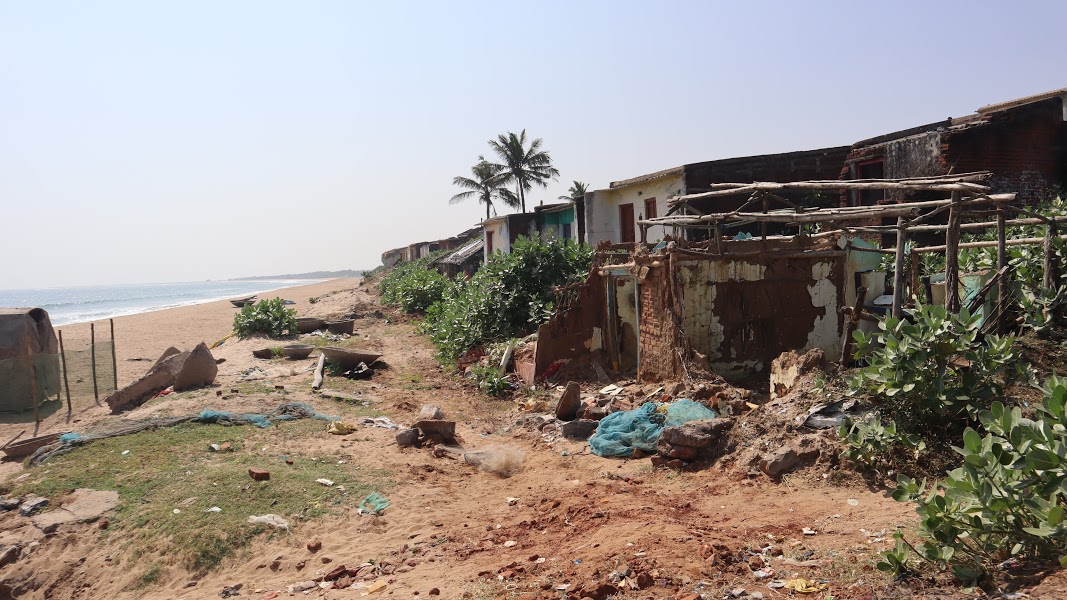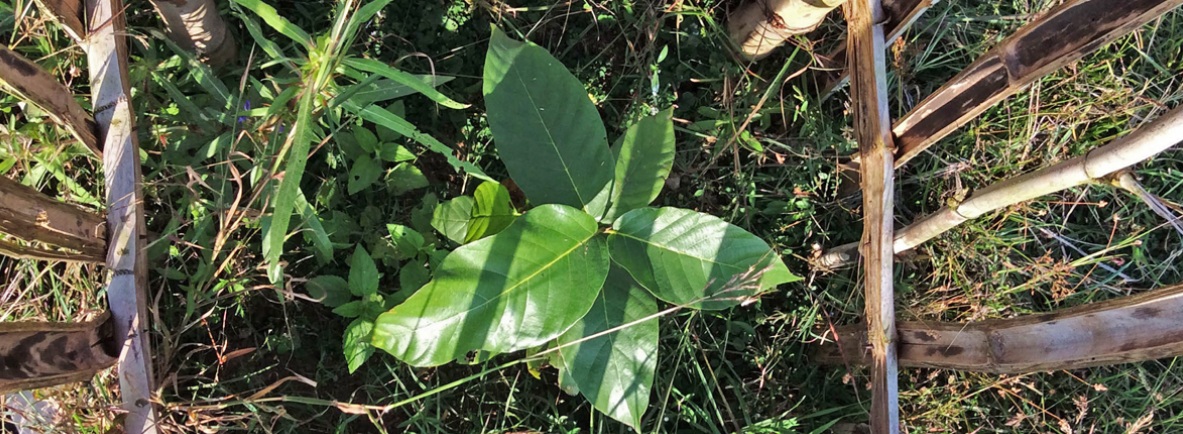
- Jharkhand’s sacred groves, generally referred to as sarnas, are central to the tribal communities’ culture and heritage.
- These patches of forests with sal trees and a cluster of other tree species are places of worship for the tribals in the state.
- The state government’s scheme to conserve the sacred groves by erecting boundary walls around each sarna has divided the tribal people of the region. One section alleges that the scheme is a ploy to impose other religions on them and fear the inclusion of their tribal land in the government land bank.
- Others however agree that the walls will protect the sarnas from being swallowed up by developmental projects, which they feel is a threat to tribal culture and heritage.
The mellow winter sun casts a soft glow on 13 sal (Shorea robusta) saplings encased in bamboo enclosures at Pandrasali, a small hamlet in Jharkhand’s West Singhbhum district.
Pradhan Birua kneels down near one of the bamboo structures and smiles. After all, the young plants are his babies. Back in 2018, he was determined to re-introduce the “sacred sal” in his village after lightning struck down the last tree. Birua, a member of the Ho tribe of Jharkhand, involved 15 children in his mission. Today, a long wait lies before him as the saplings slowly turn into hardy trees in the decades to come. But the changemaker has sown the seeds for the future.
The enclosure that Birua is tending to is within a sacred grove, called sarna, by the tribal communities in Jharkhand, which has a long history of adivasi (tribal people) struggle.

These patches of forests with sal and a cluster of other trees such as mahua, neem and banyan among others, are places of worship for the tribal people in the state. Sal is a must in these groves because the indigenous (tribal) communities believe that Singh Bonga, the supreme deity, resides in the sal tree. Felling of trees, harming animals and plucking leaves are usually forbidden in these sacred spaces.
Back in the courtyard of his house, Birua’s face lights up as he recalls his adventures in reintroducing the sal trees inside the sacred grove at Pandrasali.
“The state government is trying to protect sarnas (sacred groves) by constructing boundary walls, but what about planting trees?” he questioned, referring to the gherabandi scheme (encirclement in Hindi) of the Jharkhand welfare department.
Gherabandi is a scheme to protect and conserve sarnas by creating boundary walls around them. It is carried out by the welfare department after the gram sabha’s approval.
“But without the sal, sarnas hold no significance for us,” stressed Birua. The government must understand this, he emphasised.
Inside the sacred grove at Pandrasali, entwined, lifeless branches of the dead sal trees lie on the ground.
Birua and his young army planted the saplings at a distance away from the spot where the old trees once stood. The apprehension is that the place where the old trees existed is a lightning-prone area, and hence, the precaution.
The children worked hard to ensure the saplings survived the monsoon showers. They helped in making the enclosures to fend off cattle and goats. Watering the saplings is also a challenge as the nearest river is about a kilometre away. Still, the champions zealously guard the saplings.
And even as a lone man is trying to re-introduce sal trees inside a grove, the state government is living up to its promise of constructing boundary walls around sarnas.
At the Pandrasali sarna, where Pradhan Birua is busy at work, the wall is ready to be plastered with cement.

Construction work is also going on in a few other villages in Ho-tribe dominated West Singhbhum district.
In the district’s Thai village, Dashrath Lohar is busy mixing cement and wiping perspiration from his face. On approaching, he informs that work has been going on since the past three weeks under the gherabandi scheme.
But opinion is divided among the communities over the state government’s purported real motive, with a section of the tribal community alleging that the government is forcing them to follow other religions under the garb of the scheme. They also fear the inclusion of tribal lands in the government’s land bank.
Durgawati Oreya, a social worker based in Jharkhand’s Khunti district said sarnas should not be made to look like structures of other religions.
“We like to worship our deity, the Singh Bonga, in the open, who resides in the sal. But I feel tribals are being compelled to follow other religions while we are demanding the adivasi religious code,” she explains.
But she also agrees that boundary walls may prevent encroachment in future, amid apprehension of inclusion of tribal lands in the government land bank.
The fear of tribal lands being taken over gained momentum after the Jharkhand government tried to amend the Chhotanagpur Tenancy (CNT) Act and the Santhal Pargana Tenancy (SPT) Act in 2017 amidst widespread protest.
Even though the amendment bills were later withdrawn, the suspicion is still rife among tribal people over the government’s purported motive.

“Sarnas mostly exist in community lands. In many areas of Khunti which has witnessed massive land acquisition, such lands have been included in the land bank surreptitiously. So, naturally many sarnas have vanished in the name of development and beautification,” points out Masih Guria, a student and social worker in Khunti.
An independent study by social activist Stan Swamy reveals that the state government has earmarked 12,408 acres of common land in Khunti’s Torpa block for inclusion in government land bank. Of this, 31.85 acres are sarna lands.
Do boundary walls offer protection?
In Khunti’s Dulua village, Sanika Munda defends the construction of the boundary wall. There have been numerous occasions when people have tried to unlawfully enter the sacred grove with alcohol bottles.
So, in 2016 the wall was constructed after the gram sabha’s approval. At present, the gate remains locked and is only opened on Sunday morning from 9 am to 12 pm (noon) for worship, he said.
Munda doesn’t doubt the state government’s motive of conservation of the sacred groves even though he has heard rumours about the identification of 16 acres of land for constructing a women’s college at a tribal worship place nearby.
Oreya is not convinced. “Many people are not aware of the inclusion of tribal lands in the land bank. After being displaced, they will realise their mistake. The walls are of no use as miscreants can enter the groves at night by jumping over. The welfare department is just wasting money.”
Chaibasa-based Ho language teacher Dobro Buriuli says every tribal village in Jharkhand has a sarna. But in Angardiha village in West Singhbhum’s Tantnagar block, no such place exists.
The entire village forest is considered sacred by the residents.
Buriuli fears that if the forest is converted into a reserved forest in future, then the sarna will vanish. Angardiha resident Shailendra Purty says, “We consider the forest as sarna. But we are afraid that it may become a reserved forest gradually. Generally, the forest department blames locals for deforestation and felling of trees. However, the forest has been with us for centuries.”
Despite apprehensions, walls have caught the fancy of tribals across many villages in West Singhbhum. Some residents of Bhaluburu village are eager to have a wall, but nothing has happened till now.
According to Purty, structures of other religions are well maintained. “So, our people are also thinking in the same way,” Purty said.

Maango Boipoi of Bara Koita village agrees. He said the gherabandi scheme has enhanced people’s faith in sarnas.
In Silpunji village, where there is no boundary wall, Bideshi Gope favours its immediate construction. “Women mostly urinate inside sarnas during the paddy harvest season as the place offers them protection from prying eyes,” Gope said.
In Meri Tola which falls under the Chaibasa Nagar Parishad, gherabandi has been carried out due to rising population and to prevent outsiders from encroaching upon sacred groves.
The sarna here belongs to the Oraon tribe. Unlike the cut-off tribal villages of West Singhbhum, Meri Tola resembles a bustling urban area. Citing the instance of Tambo and Meri Tola, Bagun Bodra, a friend of Buriuli, says that outsiders have encroached upon tribal lands in those villages which lie near towns and cities.
“Due to population explosion, many sarnas are getting dirty. So, we have agreed for boundary walls as a safeguard measure. Our priests (pahan) have appealed to gods to accept the gherabandi scheme,” Bodra says.
Buriuli points out that sarnas on the roadside will vanish once widening projects are approved.
“At that time if we resist, we will be labelled anti-development. Jharkhand was created for tribals,” he said. Today, Buriuli feels, tribal rituals and traditions are at risk due to development projects. The spiritual relationship of tribal people with forests and trees is deteriorating due to government callousness, he said.
Shadow of land acquisition
Fear of sarnas gradually vanishing is deep in areas where lands have been acquired by the state government for development projects.
Rahul Oraon, a resident of Kutte village in Nagri block of Ranchi, who heads the HEC Hatia Visthapith Parivaar Samiti, informs that all inhabitants of 12 villages around Kutte in Nagri and Namkum blocks were displaced when land was handed over to the Heavy Engineering Corporation (HEC) in the 1960s. “Our sarnas have vanished. We should get them back or else tribals will forget their culture and embrace other religions,” he said.
Residents allege that in Kutte, the sarna is currently without a wall as HEC claims ownership over the plot of land.

Same is the case with the Jagannathpur sarna under the Dhurwa police station area where funds were released, but HEC raised an objection to the boundary wall.
A local government official said, on conditions of anonymity, when the gherabandi work started in Jagannathpur after land inspection, HEC created problems. Now, work has stopped for almost six months.
In a letter dated in April 2019, HEC pointed out that the sarna land belongs to the company after the government acquired and transferred it.
A K Pandey, project director, Integrated Tribal Development Authority, said after the HEC raised an objection, work was stalled. “We will decide whether the boundary wall will be created after the assembly elections. The land deed records it as a sarna sthal. We will sort out the matter,” he adds.
Ajit Oraon, the vice-president of Raji Parha Sarna Prarthana Sabha, a Ranchi-based social organisation, says the land acquisition shadow has stopped the execution of the gherabandi scheme in a few places.
He points out it is natural for tribal people to feel insecure and cites the example of a sarna sthal, a sacred site, which is now inside the Birsa Munda airport. “Today, we have to seek permission from the airport authority for entering the sarna. After we request them, they open it for us,” he said.

Airport director Binod Sharma says that legally the Hinoo mouza sarna sthal lies in the operational area near the runway. But people are allowed to enter once a year during festivals. When the land was acquired by the government, the people were duly compensated, Sharma adds.
In a letter dated December 2019 to the airport authority, the Hinoo Sarna Samiti (that works for sarna and tribal culture conservation) has requested the authorities to provide access to people every Thursday from 8 to 12 in the morning.
Sarnas have also shrunk in size due to the expansion and development of railway colonies. One such example is the Kalyanpur sarna in Namkum block, which now measures about 5 decimals.
Before that, it was spread over 3 acres and 85 decimal of land. “We need space for conducting sarhul and karma puja. Many people dance on these occasions,” says Ajit Oraon. Sarhul is a three-day spring festival. Tribals sing and dance during sarhul.
Lily Kachhap, a section officer in the Ranchi district welfare department, said funds are allocated for boundary walls after gram sabhas (village councils) send proposals.
“Sometimes even MLAs and MPs recommend boundary walls. But we always check land plots carefully before proceeding, as walls cannot come up on controversial areas or in cases of disputes,” Kachhap said.
In 2016-17, the Ranchi welfare department spent Rs. 19.3 million (Rs. 1,93,15,565) on gherabandi. In 2017-18, Rs. 19.2 million (Rs. 1,92, 13, 621) was spent. In 2018-19, the amount stood at Rs. 55 million (Rs. 5,51,18,570), according to the department’s record.
Amid the contentious issues of land acquisition, displacement and vanishing of sarnas due to a number of factors, Jamshedpur-based non-profit Deshauli Foundation is creating natural boundaries through afforestation to protect groves.
Founder Sadhu Ho says that in East Singhbhum and West Singhbhum, some leaders are making the gherabandi scheme a political issue. In many villages, people are not favouring walls even after the approval of the gram sabha. Ho’s organisation, which started working in 2018, is collecting funds to plant saplings around the edges to demarcate sarnas. “Trees will not only beautify our groves but also help to recharge the groundwater level,” Sadhu Ho said.
It remains to be seen how far the efforts of Birua and Ho go in protecting sarnas, that are facing an existential threat in Jharkhand.
(This story was first published on Mongabay India. Read the full story here. The story has been published on the theblink.in with due republishing rights)


